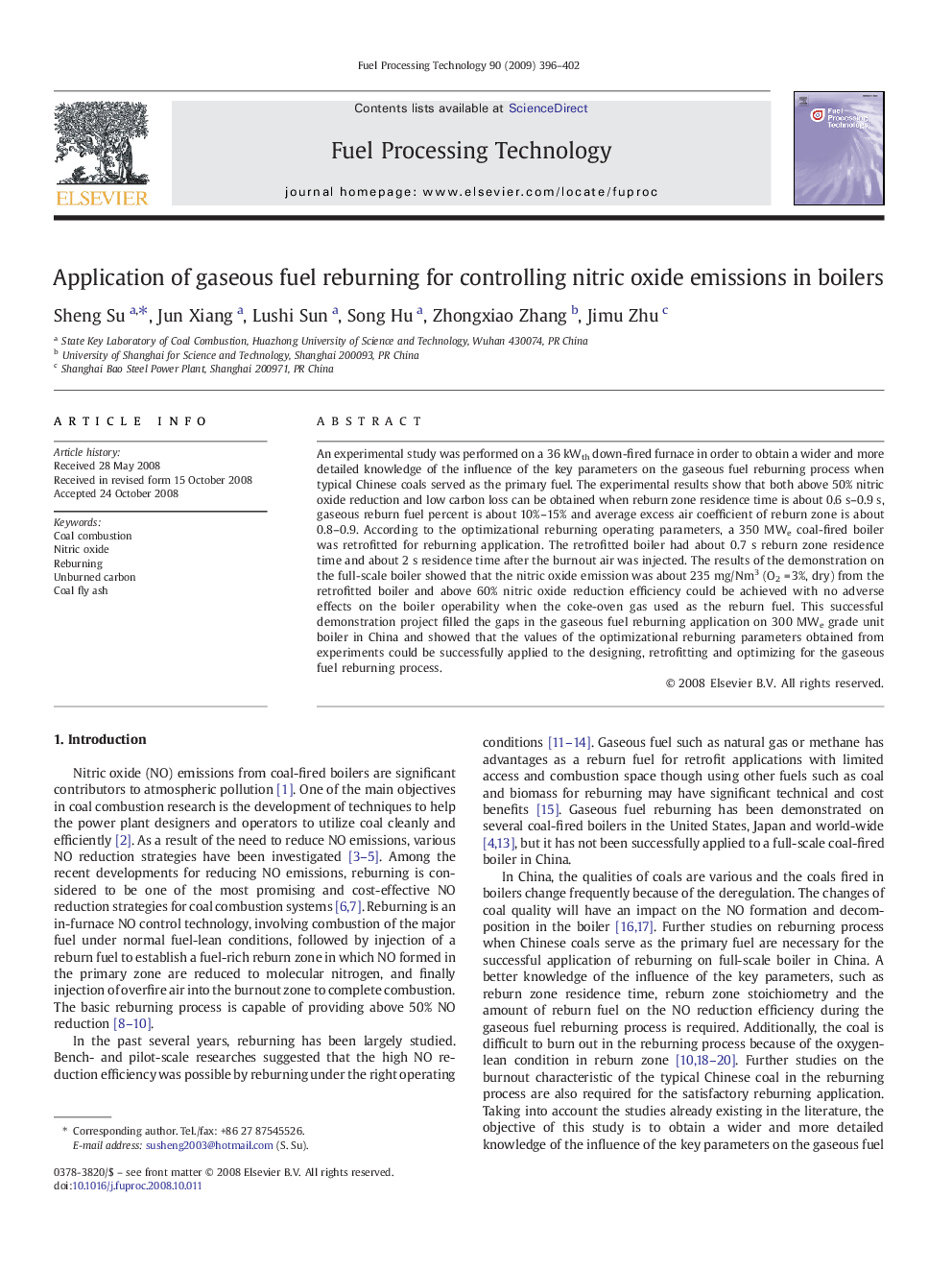| Article ID | Journal | Published Year | Pages | File Type |
|---|---|---|---|---|
| 211133 | Fuel Processing Technology | 2009 | 7 Pages |
An experimental study was performed on a 36 kWth down-fired furnace in order to obtain a wider and more detailed knowledge of the influence of the key parameters on the gaseous fuel reburning process when typical Chinese coals served as the primary fuel. The experimental results show that both above 50% nitric oxide reduction and low carbon loss can be obtained when reburn zone residence time is about 0.6 s–0.9 s, gaseous reburn fuel percent is about 10%–15% and average excess air coefficient of reburn zone is about 0.8–0.9. According to the optimizational reburning operating parameters, a 350 MWe coal-fired boiler was retrofitted for reburning application. The retrofitted boiler had about 0.7 s reburn zone residence time and about 2 s residence time after the burnout air was injected. The results of the demonstration on the full-scale boiler showed that the nitric oxide emission was about 235 mg/Nm3 (O2 = 3%, dry) from the retrofitted boiler and above 60% nitric oxide reduction efficiency could be achieved with no adverse effects on the boiler operability when the coke-oven gas used as the reburn fuel. This successful demonstration project filled the gaps in the gaseous fuel reburning application on 300 MWe grade unit boiler in China and showed that the values of the optimizational reburning parameters obtained from experiments could be successfully applied to the designing, retrofitting and optimizing for the gaseous fuel reburning process.
